Summer Tree Care Tips to Keep Your Trees Thriving
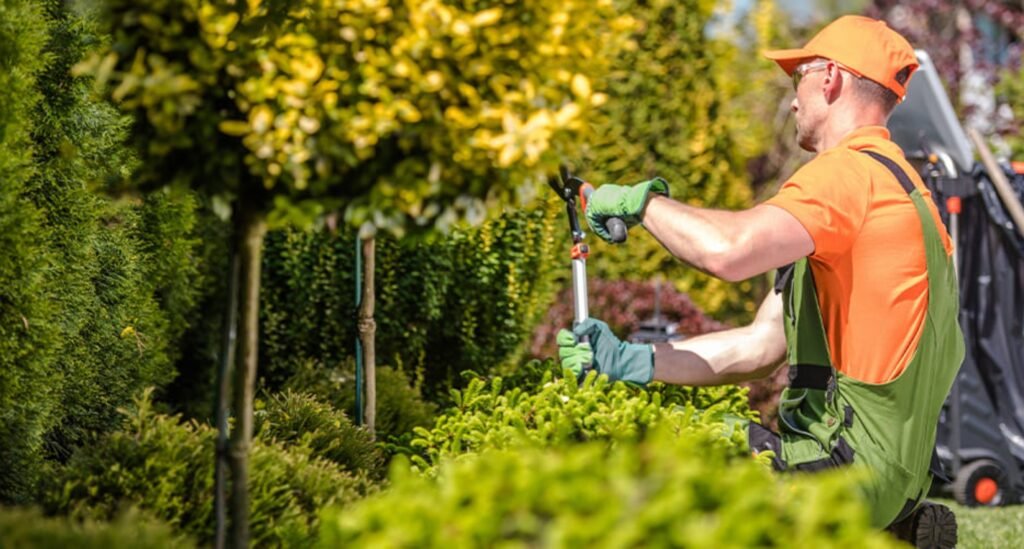
Wonder why some trees are green in August, while others look tired as early as June? The difference is usually not due to luck. Rather, it is the choices done in the spring and early summer that seem to be unacknowledged. If you have ever thought about how to prepare trees to withstand heat waves, dry periods, and torrential downpours, you are in the right place. Below is your summer tree care guide that focuses on sustained growth. Things are not that complicated if you work strategically. Water Deeply, Not Daily Successes during summer begin below the surface. Deep watering encourages roots to extend deeper into the soil where the temperature and moisture level is more stable. Instead of quick surface sprinklings, water the soil more slowly during 30-60 minutes using a soaker hose or gator bags positioned along the drip line (the circle area beneath the outer canopy). This should be 1-2 inches of water to be received weekly, including rain. This reduces drought stress and leaf scorch, and it prevents weak, shallow roots. Mulch to Regulate Soil Temperature and Moisture An adequately done mulch ring serves as an air conditioner to your tree during the summer. From a few inches off the trunk to just beyond the drip line, spread a mulch layer (shredded bark, wood chips, or leaf mold) to a depth of 2–3 inches. By lowering the temperature, minimizing evaporation, and improving soil structure as it breaks down, mulch serves the purpose of moderating temperature swings and improving soil structure. The worst scenario, the dreaded mulch volcano of the trunk, gets moisture trapped and rots, and the decomposition serves as a buffet for pests. Prune With Purpose (and Restraint) Although winter is the ideal time for the hardest cuts, light structural pruning during the summer can improve light penetration, remove deadwood, and reduce wind resistance. Crossing branches, suckers, and energy-draining water sprouts are ideal targets. Concentrate on cuts with a diameter of less than 1 inch, and use sharp tools to do the cuts to reduce unnecessary stress. For mature trees or those with defects, consider cabling and bracing an ISA Certified Arborist can assess whether support systems will improve stability before storm season. Feed the Soil, Not Just the Tree A properly functioning food-web system will always result in tree abundance. In the case of over-fertilization, especially with quick-release nitrogen sources, growth may occur too quickly and become unfettered, opening the door for myriad pest problems. Stop and consider the more sophisticated approach of adding compost, slow-release fertilizers and grazing animals, and stimulating mycorrhizal associations that help roots reach for scarce water and nutrients. Better soil means increased uptake and stronger defenses, as well as better resistance during the summer. Scout Pests and Diseases Weekly Hot, humid weather is a playground for troublemakers. Once a week, spend five minutes on a canopy scan; look for chewing damage, sticky honeydew, wispy webbing and patches, or discolouration. Typical summer problems are aphids, the scale insect, borers, spider mites, powdery mildew, and the leaf spot. Detection is key. Use integrated pest management; IPM by encouraging beneficial insects and washing small infestations off with water, and treat conservatively, escalating only when the situation calls for it. For borers and systemic problems, damage burns structural, consult a professional for systemic concerns. Protect Young and Newly Planted Trees The first three years are important because young trees haven’t anchored deep roots which makes it easier for them to lose moisture. For protection, ‘stake’ trees replacing the stakes after the first year. Water regularly, and establish a 3ft mulch ring to keep weeds down for competition minimisation. Consider temporary shade cloth during extreme heat waves for thin-barked species to prevent sunscald. Avoid weed trimmers near trunks—mechanical injury invites decay and disease. A simple plastic trunk guard can save a tree’s life. Manage Soil Compaction and Oxygen Flow Soil compaction makes it very difficult for roots to absorb oxygen and water. Summer gatherings, heavy pots, and mowers can also compress the root zone, particularly on lawns that grow over roots. In all cases, foot traffic and equipment should be excluded aside from the drip line. If your site is already compacted, vertical mulching or air spading (better left to a professional) can open channels for air and water. Even a low-tech approach, such as top-dressing with compost and mulch, can improve pore space and soil moisture retention. Storm-Readiness: Reduce Risk Before the Wind Blows More extensive damage can be brought on by sudden summer storms, or high winds. Identify weaknesses by inspecting the trees for branches with bark inclusions, for dying or detached limbs, or decaying pockets. Repair your trees before the winds pick up. Gently trimming the outer branches can ‘lightly prune’ the limbs without ‘lion-tailing’ to reduce the chances of damage by the wind. Power lines, buildings and other structures can also be negatively affected, so make sure you consult the professionals. This will save you money from potential damage to the trees. A Simple, Sustainable Summer Routine If you want a minimalist checklist that still moves the needle, try this rhythm: Weekly: five-minute pest and canopy scan. Biweekly: deep watering if rainfall is short. Monthly: quick mulch check, light touch-up pruning (only if needed). Mid-summer: soil moisture and compaction review; adjust irrigation. Before storms: remove obvious hazards. Conclusion Effective tree summer care isn’t a matter of doing everything but rather doing the right things constantly: irrigate to the depth of the roots, place mulch accurately, prune with purpose, conduct soil nurturing, and monitor the trees for signs of trouble as early as possible. When you do the right things for a tree: match species to site, thermally insulate, compact the soil, brace for a storm, and avoid a storm, the tree pays you back for decades with shade, beauty, and increased property value. And if you’d like to have an adept professional scrutinize your canopy or assist you in formulating a precise, efficient, and sustainable plan, contact NYC Tree
Spring Tree Care Checklist: What You Need to Do Now
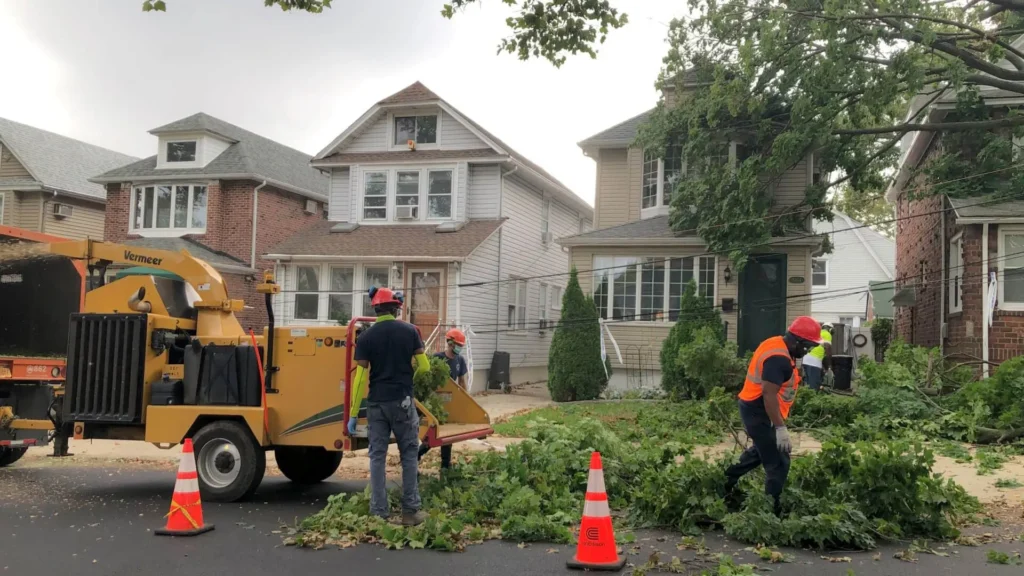
Spring Tree Care Checklist: What You Need to Do Now After enduring months of winter’s snow, ice, and wind, countless property owners dread the sight of their trees in the spring. Weak, broken branches dangle perilously close to the roofs of their houses, already infested with pests. Bark appears to be stressed, too. Failing to act in time could result in minor problems spiraling out of control, which could result in huge expenses later on. That is why, in the early spring, seasonal tree maintenance and care is crucial. Strengthening your property at this time is ideal. A healthy tree is a lifesaver and a well crafted checklist in advance assures good protection of the property in the seasons to come. 1. Start with a Post-Winter Tree Inspection Looking for the adverse effects of winter on each tree is the first order of business for annual tree maintenance. While snow and ice can conceal fractures, the harsh, cold winds of winter can expose the bark to putrefaction, inviting vulnerable wounds. Survey the premises and diagnose the wreckage of limbs and the fractures of branches, along with symptoms of stress. Younger trees should be the priority because the silky sheath is more delicate and susceptible to abrasion. In advance of the season, spotting these issues and resolving them can prevent much bigger problems from occurring. 2. Pruning for Shape, Health, and Safety Among the four seasons, spring offers the best opportunity to prune trees because the branch structure is apparent prior to the formation of new leaves. The removal of dead and diseased limbs minimizes the chances of infection. It also improves the air circulation within the canopy, thus lowering the risk of fungus development. Effective pruning is done above the branch collar with clean, smooth cuts, and pest-prone stubs must be avoided at all costs. If the branches over the walkways, or touch the utility lines, these should be trimmed now to avoid having accidents during the summer storms. 3. Focus on Tree Disease Prevention Seasonal Care Higher temperatures lead to a deficiency in trees’ barriers against pathogens and pests. Seasonal management of tree diseases consists of removing infected wood, disinfection of pruning tools cut by cut, and applying pesticides and fungicides in a calculated way. Early spring may see the emergence of apple scab, powdery mildew, and anthracnose. Inspect the leaves and buds for suspicious shapes and colors. Early detection and action prevents the diseases from spreading in your yard. 4. Mulching to Protect Roots and Conserve Moisture Though it may seem like a simple task, spring mulching actually serves several important functions. It protects against temperature fluctuations Conserves moisture and Minimizes weed growth Organic mulches like shredded bark and wood chippings can be used in a 2-3 inch layer around the perimeter of the tree. However, do not apply mulch closer than 3 inches from the trunk to prevent injury to the tree’s bark. Incorporating this step in the yearly tree maintenance makes it easier to mitigate water stress and improve the root zone in subsequent dry summer months. 5. Fertilizing for Growth and Strength In promoting nutrition and rest for favorable growth after months of dormancy, trees go through a growth period of nutrient-deficiency. Apply slow release (high nitrogen, phosphorous and potassium) fertilizers. Examine your soil before applying, for too much nitrogen causes overly vigorous leaf growth and weak wood. Thicker and denser wood offers more defense against insects and better root growth. 6. Watering with Precision Although many trees benefit from spring hydration, such is not the case for all trees. Young and newly planted trees usually require supplemental watering to establish roots and even beyond spring hydration. Deep watering is key, meaning saturating the soil enough for roots to grow deep down, instead of just near the surface. Frequent and shallow watering encourages weak root systems and should, therefore, be avoided. A good rule of thumb is 10 gallons of water for every inch of trunk diameter and this should be done every week throughout the dry periods. 7. Pest Monitoring and Management Aphids, borers and caterpillars are most active in spring. They damage leaves and branches and spread disease. Regular inspections are your best defense. Check undersides of leaves for eggs, webs or sticky residue. For minor infestations horticultural oils or insecticidal soaps work well. For bigger problems professional intervention ensures safe and targeted solutions. Early pest control prevents long term stress and decline of tree health. 8. Support for Weak or Leaning Trees Some trees may have developed weak spots or leaning trunks during winter storms. Staking or cabling helps to stabilise them until roots regain strength. This is especially important for ornamental trees and fruit trees which carry heavy seasonal loads. When staking don’t tie ropes too tight as this can damage the bark. Proper support should allow natural movement which encourages stronger trunk development. 9. Lawn and Soil Care Around Trees Healthy trees begin with healthy soil. Aeration in spring addresses soil compaction. Springtime aeration addresses this issue by providing small holes so water and nutrients can reach deeper. Treating the area under trees with lawn fertilizers and herbicides is not advisable as these substances can be detrimental to the roots. Improving soil structure and providing soil-activated nutrients for many months makes compost an excellent choice to include in your spring fertilization. Conclusion Failure to carry out necessary spring maintenance on your trees may result in fragile frameworks, avoidable sickness, and expensive destruction later in the year. Paying attention to pruning trees by season consists of any of the following activities: inspection, pruning, mulching, fertilizing and watering, and pest control, will help your trees remain vigorous throughout the year. Trees which are in a good state of health will improve the aesthetic value of your land and, more importantly, will safeguard your capital in the future. For any active tree care, call the experts at NYC Tree Pro.
How to Prepare Your Trees for Harsh Winter Weather
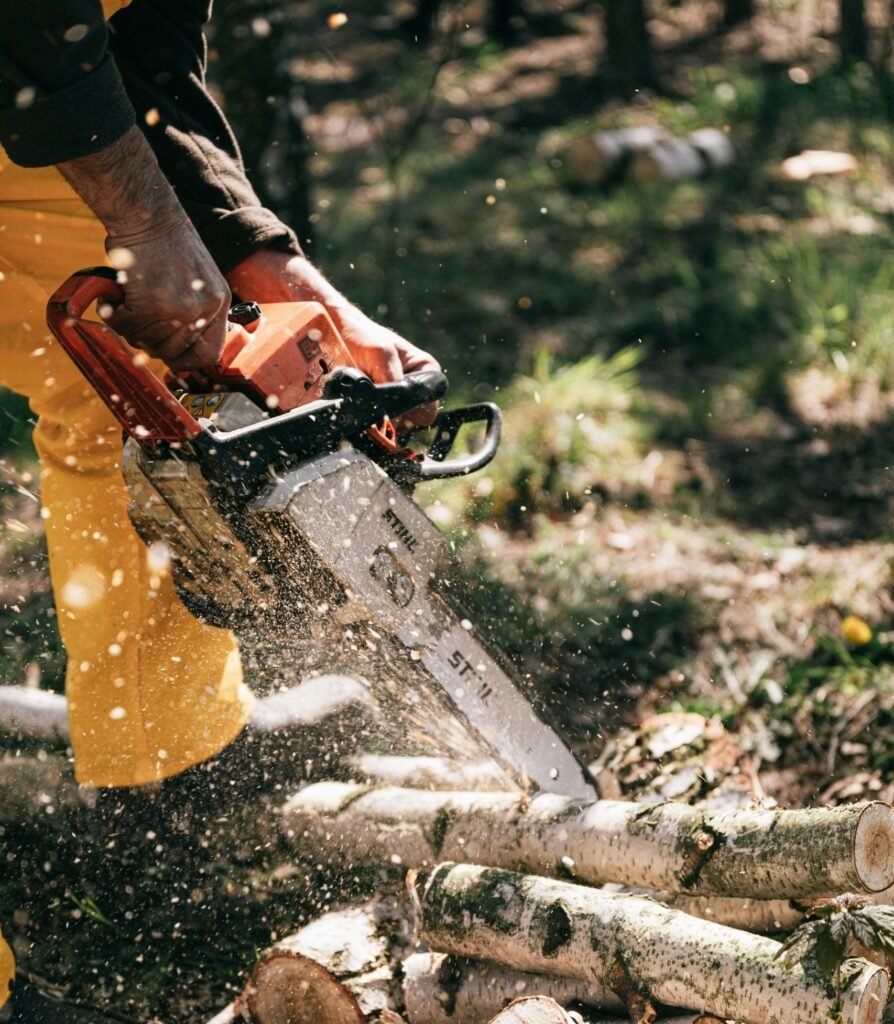
How to Prepare Your Trees for Harsh Winter Weather Are your trees ready to face the full force of winter’s wrath? Most people get their homes, cars, and clothes set for the cold but forget about the trees in their yard. That can be a big mistake as trees are the most vulnerable. It is not good for trees to be exposed to harsh winter temperatures, icy breezes and snow storms. As this leads to breakage of branches, causes roots to push up and get exposed, or it can even kill young or weak trees. However, the good news is that you can take simple steps now to protect them before things get worse. This guide shares simple tree maintenance tips based on arborist recommendations to help your trees handle winter. 1. Start with a Tree Health Assessment Critically assess your trees before winter hits. Check for pest infections, rotting, or signs of decay. Look at the roots too for structural weakness. If the tree leans or feels unstable, it might be weak inside. To better protect your trees, you need to know what their current condition is aka how healthy they are. Look for: Dead or broken branches Cracks in the bark Discolored or fungal-infected leaves and trunks Hollowed trunks or root flare issues Leaning or unstable trees If you see any of these warning signs, get advice on tree maintenance tips. Small problems grow fast in bad weather. Fixing them early can save your tree—and your yard. Before winter hits, do a full fall leaf cleanup. 2. Prune Weak and Overextended Branches Pruning trees might not sound exciting. But it is one of the most important steps you can do before winter hits. Heavy snow can snap weak branches. Dead limbs break first. That can mean roof damage, yard mess, or injury. To save yourself from this damage, go for strategic spring tree pruning. When pruning: start by cutting off anything dead, sick. Then thin out the thick branches. Let the tree breathe a little. Trim it enough to give it a proper shape. If the tree is tall or near power lines, call professionals. Tree trimming services have the right tools plus know how to stay safe up there. Well-pruned trees hold up better in storms. Mulch the Root Zone Generously Just as we dress up in winter, consider mulch to be a warm blanket for your tree’s roots. It keeps them from getting cold. Young or shallow roots hate winter weather. An organic 2-3 inch layer of mulch prevents the ground from freezing too quickly or drying out. It also retains moisture. That is, you won’t need to water as frequently. How to use: Use organic mulch such as wood shavings, bark, or compost. Put it out in a large circle, 3 to 5 feet from the trunk is sufficient. Don’t let it reach the trunk. Keep about 2 to 3 inches of distance. That prevents rot and keeps insects away. Add more if you feel the mulch has thinned out. Refreshing it once or twice per season is normal. 4. Water Deeply Before the Ground Freezes Due to the misconception of nature taking over during fall, many people stop watering their trees. Water is essential for trees like evergreens and newly planted, fresh trees. Unless the ground hasn’t frozen, do not stop watering your plants. Dry roots are the leading cause of winter injuries and dehydration among trees. Use a slow trickle method or a soaker hose to deeply hydrate the soil. Focus on: Watering during dry spells Ensuring soil is moist (not soggy) to a depth of 12 inches Watering in the early afternoon so the water doesn’t freeze overnight Well-hydrated trees are more capable of resisting cold weather stress and frost injury. 5. Wrap Young and Thin-Barked Trees In winter, there are two conditions that might damage your trees: sunscald and frost cracks. These happen when the tree bark after being frozen, thaws a bit and then is frozen again. This occurs when the sun sometimes comes out in winter. The partial thawing and rapid freezing destroys the tree. Young maples, lindens, and fruit trees are often affected. To protect them: Wrap the trunk with tree wrap, burlap, or corrugated tree guards Start at the base and overlap upward Remove wrap in early spring to avoid pests and rot 6. Stake Newly Planted or Top-Heavy Trees Trees need to be acclimatized. So, when you plant a new one, give it time. Its roots need to grow into the soil. As the tree is still young and fresh, it can easily tip over in strong winds. This is called windthrow. It is common, especially in the first year of planting. Heavy winds can damage new trees as their roots are still shallow. Use soft straps so the bark does not get hurt Do not tie it too tight Only keep the stakes in for one or two seasons Let the tree move a little—it helps the roots grow strong 7. Protect Trees from Animals and Rodents For survival, some animals like rabbits, deer, and voles chew on bark and twigs on trees. They do this when finding food is difficult. Fruit trees and young trees are more susceptible. This chewing can seriously injure the tree. When the bark is chewed around the entire tree, the tree roots are unable to move water and nutrients. It can slowly die by springtime. To guard your trees: Cover the bottom with hardware cloth or wire mesh Use strong smells or animal repellents to deter them Include trunk wraps as an added protection Mow mulch and grass short to eliminate hiding places Following these steps as per arborist recommendations, protects the bark and keeps your trees healthy during winter. 8. Apply Anti-Desiccant to Evergreens Evergreens retain their leaves year-round, but in doing so, lose water during the winter months through their needles. This can cause the tree’s branches to turn brown or even kill the tree. People
Do You Need a Permit to Remove a Tree?
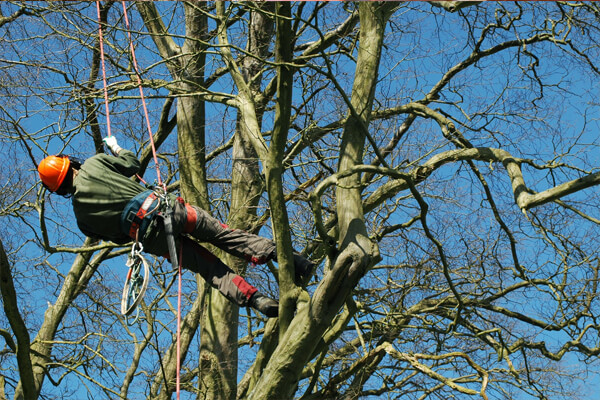
Do You Need a Permit to Remove a Tree Ever had a neighbor whisper, “You can’t cut that tree without a permit”? You might shrug it off. Thinking it is your property and your rules. But hold that chainsaw. Cities across the country enforce strict tree ordinances. This can bring fines and legal headaches. You could have to force tree replacements if you go rogue. Whether you are planning to build something or simply want to clear your lot, you can’t just ignore tree removal laws. You have to understand the permit process and see how it differs from city to city. This guide is designed to save you serious trouble down the line by helping you master the basics. Why Cities Regulate Tree Removal You may be wondering why a city would care if you remove a tree from your own area. Turns out, urban trees aren’t just decorative. They are considered part of the urban forest. Trees absorb carbon dioxide and cool neighborhoods. They reduce stormwater runoff and boost up property values. That is why many local governments have stepped in with tree protection ordinances. Especially for heritage trees those in environmentally sensitive areas. Cutting without permission can be considered illegal. When a Permit is Usually Required City laws vary. But to give you a general idea, Size matters: If the tree has a trunk diameter above 6 inches. Species counts: Some trees are protected due to their ecological value. Invasive species? Chop away. Native oaks? Need only city approval. Location: Trees growing on public right-of-way (like sidewalks), in conservation zones, or on multi-family lots. Health of the tree: Dying or dead trees need no permit most of the time. But still an arborist evaluation is necessary to prove its health. Construction-related removal: If you are planning to remove trees for a building or driveway project. Tree Ordinance Snapshot: New York City Lets zoom in on New York City. It is one of the most regulated places when it comes to tree removal. Street trees belong to the city, not the homeowner. You need a permit from the Parks Department before doing any trimming or removal. Trees on private property? If it is not interfering with city property or construction, you may not need a permit. But if the tree is near a public right-of-way or landmark property, expect to file paperwork. Penalties for illegal removal can cost thousands of dollars. It mainly depends on the size and location of the tree. Los Angeles: Coastal Tree Rules and Native Plant Protection In Los Angeles, you will run into a web of regulations. Particularly where the coastal zone is concerned, or if the property contains any protected species such as black walnut (southern California) or coast live oak. The Protected Tree Ordinance identifies any native species whose trunk measures inches in diameter or greater. In such cases, a Tree Report prepared by a licensed arborist and approval from planning or public works is required. Excessive pruning is also considered a violation unless it has been approved. Atlanta: Capital With Stringent Policies Atlanta is known for its lush canopy. But it has one of the strictest tree protection laws in the country. Any hardwood or pine tree on private property with a diameter of 6+ inches requires a tree removal permit. Property owners must submit a site plan and an arborist report. They must pay a recompense fee into the city’s Tree Trust Fund. Don’t expect to get around it with DIY removal. Contractors are required to show proof of permits before work begins. San Francisco: Classifying Heritage Trees In San Francisco, there is a particular emphasis on heritage trees. Those that have historical or ecological significance. Heritage trees exist on public or private property. The city maintains a registry. So, you can’t remove these trees without a hearing and approval. For regular trees, permits are still often required. Especially if they are over 24 inches in circumference and visible from public spaces. The Department of Public Works handles most of the applications. Any removal without approval can cost you thousands in fines. Houston: Looser Laws, But Not a Free Pass Houston takes a more hands-off approach in comparison to others, but not entirely. There is no citywide tree removal permit for private property. Unless you are in a protected zone like a Scenic Corridor or Planned Development District. Trees on commercial sites or multi-family properties require clearance from the Planning Department most often During development, Tree Preservation Plans are expected. So, some trees above a certain diameter may need to be preserved or replaced. Miami: Protected Tree List and Hurricane Risk Miami has a subtropical climate and storm risks. Its tree ordinances strike a balance between safety and preservation. The city maintains a Protected Tree List. This includes native species like gumbo limbo and certain palms. Removal requires a permit from Department of Environmental Resources Management (DERM). If the tree is within a Hurricane Protection Zone, you need additional evaluation. How to Navigate Your Local Tree Ordinance The process usually looks something like this: Research: Look up your city or county’s official website. Measure and ID: Measure your tree’s diameter at breast height (DBH). Also, identify what kind of species you have. Call: Reach out to the local planning or parks department and check whether you need a permit. Check in with Arborist: Many cities require a report from a certified arborist before issuing a permit. Submit the Application: This may include a fee, any site plans and also a photographic documentation. Wait for Approval: Don’t start work else you will be fined. When a Permit Might Not Be Needed: Dead tree or poses immediate danger An invasive species In a jurisdiction with minimal regulation. But do check with HOAs or local codes. Conclusion Tree removal isn’t just a landscaping decision. It is a legal one. With varying rules from coast to coast, what flies in Phoenix might get you fined in Philly. The safest bet? Know your
Permits & Local Tree Ordinances Explained: What Homeowners Must Know Before Cutting
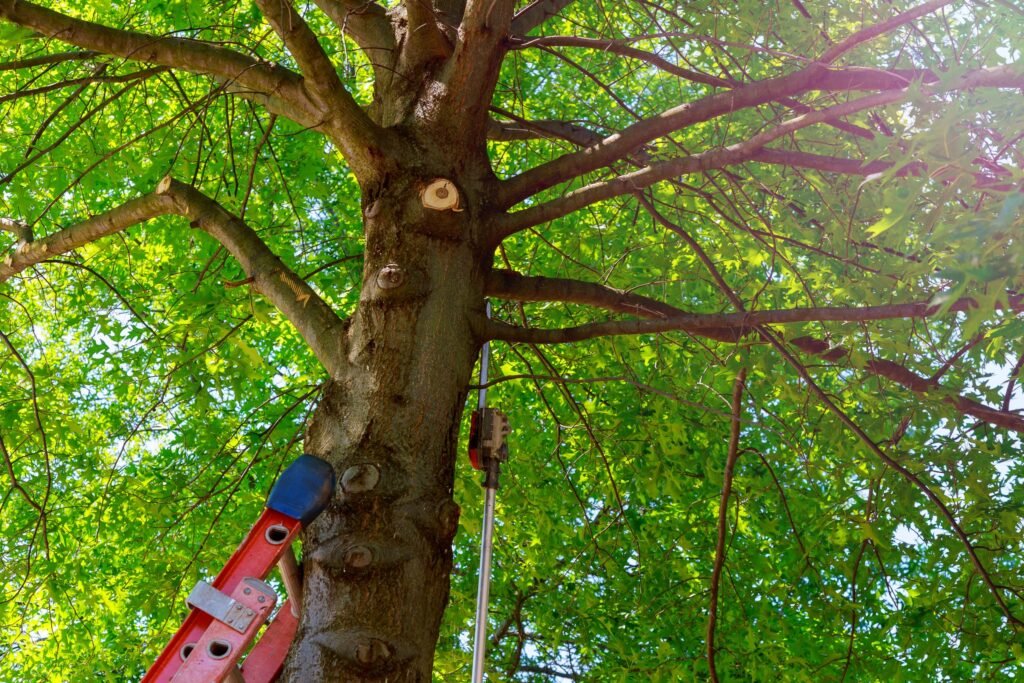
Permits & Local Tree Ordinances Explained: What Homeowners Must Know Before Cutting Are you allowed to cut that tree legally today? Urban greenery is a shared asset. It is not just a backyard element. Whether you have a massive oak tree shading your driveway or leaning maple trees, the desire to remove or trim a tree often comes with more than just a chainsaw. Before you take any action, you must understand. This guide is all about that. We will help you understand some local tree cutting regulations and municipal ordinances to remove your trees safely and prevent legal trouble. Else even one wrong move will cost you thousands. Understanding Tree Protection Laws Many cities, especially urban hubs like New York, have tree preservation ordinances. These laws help to: Maintain urban canopy cover Protect native and heritage tree species Promote environmental sustainability Prevent haphazard or dangerous removal practices What Qualifies as a “Protected Tree”? Before applying for any removal permit, determine if your tree is considered “protected”. You can check this under your local code. In most of the areas, the following trees may fall under protection: Street trees Landmark or heritage trees Trees over a particular DBH (Diameter at Breast Height) Trees in conservation zones Trees part of a reforestation or zoning plan Do You Need a Tree Removal Permit? You need a tree removal permit if your tree falls into a protected class. Regular requirements include: An arborist’s report confirms the tree’s health. You need proof that the tree has a disease, will die, or has a weak structure. You must explain the safety risks or property damage. You must submit plans to replace the tree canopy. Some trees on the street require permits even for trimming. Removing a Tree Without a Permit Unauthorized tree removal can lead to serious consequences. Don’t think you own the tree if it is on your property. Else: You can get fined ranging from $500 to $10,000+ ( depends on the area) Mandated replanting or paying into a city tree fund Stop-work orders on construction or landscaping projects Legal liability if the removal damages neighboring property or city infrastructure You could even be charged with a misdemeanor offense where protected trees are removed intentionally. Tree Ordinances by Location Every area has its own set of tree laws. For example: In New York City, only a licensed contractor can trim or remove street trees. In Los Angeles, the Protected Tree Ordinance prohibits cutting native species. For example, coast live oaks or sycamores without a permit. In Atlanta, trees on private property over a certain size need a pre-removal inspection before they get removed. Approval from the City Arborist Division is also required. Different zoning codes or historic districts might impose additional restrictions. Tip: Always check your local city or county website. Look for sections labeled “urban forestry,” “tree preservation ordinance,” or “code enforcement.” Emergency Situations: Cut Without Approval? What if a storm just knocked a tree onto your power line or car? Allowed to act immediately? In most areas, emergency tree removal is allowed without a prior permit if the tree: Is actively endangering life or property Has already fallen due to natural causes Blocks emergency access or the public right of way However, you are still required to document the damage through photos and videos. Afterwards, submit a retroactive report or permit application. Hiring a Licensed Tree Contractor Even if your tree doesn’t require a permit, your contractor might. Cities often require tree cutting to be performed by licensed and insured professionals. Because improper removal can cause: Injury to workers or bystanders Damage to structures Soil erosion or stormwater runoff issues Spread of tree disease to other healthy trees A good contractor will: Understand local tree code Help with permit applications and city communication Offer a written estimate and scope of work Use proper tree-cutting equipment and safety procedures Make sure the team you are hiring is licensed and certified. Tree Trimming Rules Many homeowners think trimming is less regulated than removal. But that is not always true as excessive trimming can lead to a process called topping. This weakens the tree. Some cities even ban over-pruning more than 25% of the crown at one time. Trimming rules often apply to: Street trees maintained by the city Trees in front yards facing public sidewalks Shared property lines, where neighbor permission may be required Trees and Neighbor Disputes: Who Has the Right? Trees growing along fences or near property lines often become a source of tension. You can generally trim branches that overhang your property but not your neighbor’s side without consent. Tree fell and caused damage? Liability depends on whether it was a healthy or neglected tree. Disputes can escalate. Always communicate early and mediate. You can also hire an ISA-certified arborist to settle arguments with a professional opinion on the tree’s health and its needs. Replanting Requirements: It’s Not Just About Cutting Many municipalities require you to replant a tree if you remove one. Replacement rules vary but may include: Plant like-for-like species Plant multiple smaller trees to replace one large one Contribute to a reforestation or green space fund Install a tree within a certain time frame (usually 30–90 days) Ignoring replanting can void your permit or lead to fines. Prepare for Permit Approval Before applying for a removal or trimming permit, gather: Property survey showing tree location Photos and measurements of the tree Written report from a certified arborist Justification letter explaining safety risks or structural concerns Replanting plan, if required by code When in Doubt, Consult an Expert If you are not sure, get professional help. An expert can: Navigate permit paperwork Evaluate tree health and safety Guide you on code-compliant trimming or removal Prevent costly legal mistakes Final thoughts Tree removal and trimming may seem like straightforward tasks. However, in today’s regulatory environment, they are anything but simple. By understanding your area’s tree protection law and hiring qualified help, you can stay on the right side
How Much to Trim a Palm Tree
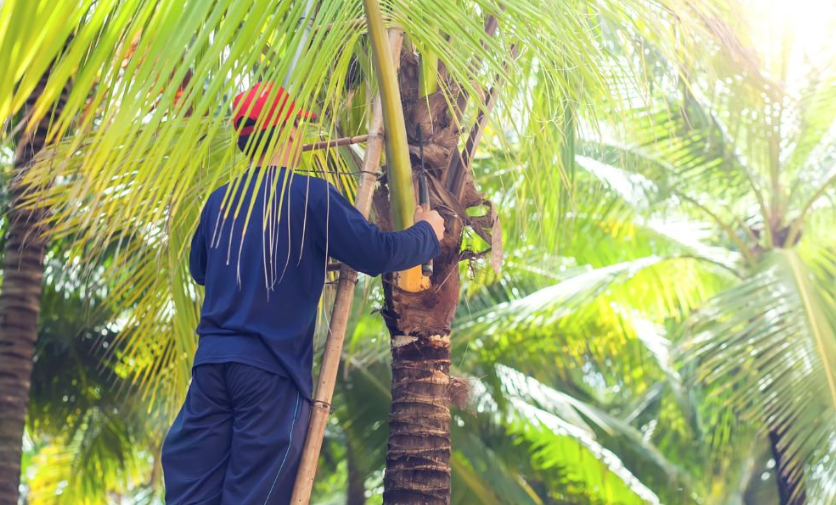
How Much to Trim a Palm Tree Got a wild and untamed palm tree in your landscapes? Do you feel the need to trim it, but are confused about how much to trim a palm tree? Good question. Because if you trim too much, you could kill it, and if you do it too little, your yard ends up looking like a jungle. No one wants that. In this guide, we will break it down for you. Be it costs, timings, and tools, we will ensure you know all about trimming so you don’t mess it up. So, get ready to embark on a adventure full of greens. What Does “Trimming a Palm Tree” Really Mean? Palm trees aren’t like oaks or maples. They don’t need trimming for shape. When you basically trim your tree, you are removing dead or dying fronds, old fruit stalks, or anything that poses a danger. It is all about health and safety. You don’t need to overdo as you can stress the tree out and make it vulnerable to bugs. This will kill the tree. So, figuring out how much to trim a palm tree is a balancing act. You want the tree to look good but also stay alive. Why You Should Trim a Palm Tree First off, do you even need to trim it? Yes but not too often. This is why it matters: Dead fronds fall off. They can hurt people or damage property. Rodents and bugs love hiding in overgrown trees. Will keep your looking neat and healthy and even prevent fire hazards in dry climates. Boosts curb appeal big time. When Is the Best Time to Trim a Palm Tree? Timing matters. Most pros say the best time to trim is late spring to early summer. Why? That is when the tree is growing fastest. You will avoid cold-weather shock. Trimming too early in spring means you may need to do it again later. Do not do this: Don’t trim in winter and during a cold snap. Don’t trim just because a few fronds are brown. Brown fronds are normal. So trim only when they are completely dead or dangerous. How Often Should You Trim a Palm Tree? Not every week and not even every month. You only need to trim them once or twice a year but too much pruning is bad. It can lead to: Nutrient loss Bug infestations Weird growth patterns. For different palm trees, there are different trimming frequencies: For Queen Palm, about 1-2x a year. For Mexican Fan Palm, once a year. For the Canary Islands, do it every one to two years. For the coconut palm, once every two years at maximum. Watch for signs like: Dead brown leaves Hanging fruit stalks Fronds blocking sidewalks or windows How Much to Trim a Palm Tree: Basic Cost Breakdown So let’s get down to the money part. How much does it cost? On average, it costs around $75 and $400. But it can increase as well, depending on the tree height. Tree Height Average Cost Under 30 ft $75 – $150 30–60 ft $150 – $300 60+ ft $300 – $1,200 Factors That Affect the Cost of Trimming: 1. Tree Height Taller trees require more labor, which means more money. They might need special ladders, bucket trucks, and safety gear. Tree Species Some palms grow fast and are messy. Others don’t need much maintenance. Like queen palms grow too fast and need regular trims, whereas date palms are tough to prune and expensive to handle. 3. Location Is your palm tree near a fence, power lines, or the roof? This makes things trickier and even pricier. 4. Tree Condition Dead fronds mean extra cleanup. If your tree is affected by pests or disease, it would need more proper handling. 5. Debris Removal Want everything cleaned up and hauled away? You can expect an extra bill added to the overall cost. If you want to avoid overpaying, get multiple quotes and ask if they include cleanup and insurance. DIY vs Hiring a Pro: Which Is Better? Thinking of doing it yourself? You can, but you shouldn’t. There are some advantages like: Save money Learn a new skill Satisfying (if done right) At the same time, there are some disadvantages as well: Dangerous—fall risk, sharp tools Time-consuming No insurance if something breaks Wrong cut = permanent damage Most people end up buying costly tools like pole saws and ladders. While hiring a professional arborist means: They’re insured. They know how much to trim. They clean up. They have got the right tools. How Much to Trim a Palm Tree Based on Type Not all palm trees are the same. Different species tend to grow in different way. Let’s break down some common types. Queen Palm Grows fast Fronds droop quickly Needs trimming 1–2 times per year Cost: $100 – $300 Canary Island Date Palm Big, thick, and slow-growing Can be expensive to trim Needs expert care Cost: $300 – $600+ Mexican Fan Palm Skinny and tall Fronds stack up fast Trimming is quick but often high up Cost: $100 – $250 Coconut Palm Tropical and beautiful Needs regular trimming to remove coconuts and fronds Cost: $150 – $400 Signs You’re Trimming Too Much Yes, you can overdo it as palms are not like regular trees. They only grow from the top—called the crown. Trim too many fronds, and the palm has no way to feed itself. Watch out for these signs: Yellowing or browning at the top (not just lower fronds) No new fronds growing The trunk starts to rot or bend Fungus, pests, or mold Never trim more than 25% of fronds at one time. Best Tools for Trimming a Palm Tree Using the right gear is the secret recipe for the best results. All you need are these basic tools: Pole saw (manual or electric) Pruning shears for smaller fronds Hand saw for thick bases Loppers for medium branches. Wear safety gear as well,
The Best Time of Year to Trim and Prune Trees
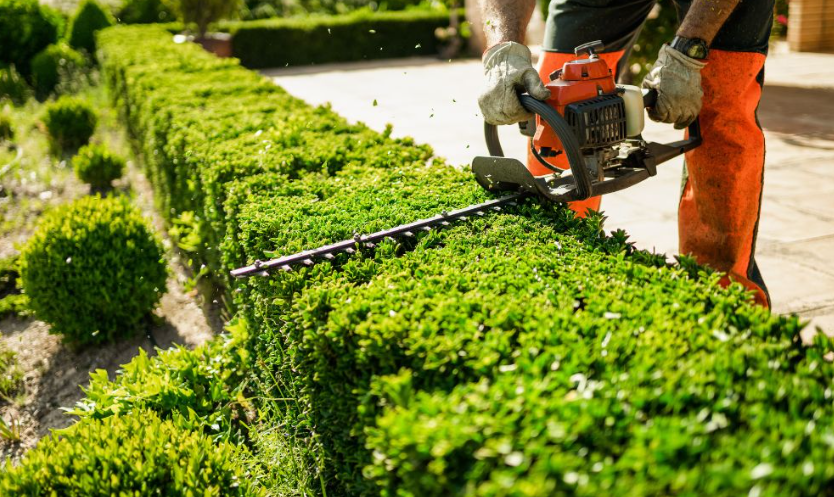
Do you want to trim and prune your trees? Well, this may look simple but it depends on the timing. If you cut the branches at the wrong time, you might get stunted growth or even make your tree prone to diseases, eventually killing it. So, one might wonder when is the best time to trim and prune trees? Arborists recommend the dormant season for most of the tree species. This season lies from late winter to early spring. You can also opt for pruning in the summer for some season, but not in fall– it is a bad idea. In this guide, you will get to discover the best time to prune trees and some species-specific pruning schedules. We will also provide you expert-backed tips to keep your trees healthy and thriving in the long run. Why Pruning and Trimming Are Essential Trimming and pruning are not just mere techniques that cut the branches of your tree. It is a crucial part of tree care. From affecting its structural integrity to its disease resistance, pruning matters a lot for your trees Promote healthy growth- Pruning is the selective removal of dead or diseased branches that help your tree redirect its energy for new and healthier growth. Reduced risk of disease- Promotes sunlight penetration and flow of air, thereby making trees less susceptible to vascular fungal diseases and blight. Peer prevention of safety hazards- swell, or weak, laden branches with wind or storm are potential safety hazards on your property. Improves the appearance– Have a more polished aesthetic and beautify the landscape. Improves fruit and flower production – Yields higher fruit production from trees like apple, cherry, and peach. The Best Time to Trim Trees by Season Winter (Late Dormant Season) – The Best Time for Most Trees Ideal timeframe: The latter part of winter, when February and early March roll in, before the new plants start growing. Why Winter Is the Best Season for Tree Pruning Trees are dormant and the rate of metabolic activities is slow. Lower risks of disease and pests – Most diseases and insect activities affecting trees are inactive at colder temperatures. Structure of the trees can be seen with more ease with bare branches – Arborists and homeowners can identify dead, diseased, or weak limbs more easily as the leaves are gone. Strong spring growth – Pruning before the formation of new buds produces healthy branches. Restricts bleeding of sap – For sap-heavy trees like maples, birches, and walnuts. Best Trees to Trim in Winter Deciduous trees (oak, maple, birch, beech) – Prevents diseases. Fruit trees (apple, peach, cherry, plum) – More fruit yield production. Shade trees (elm, ash, sycamore) – Long-term benefit to the health of the canopy. Hardwood trees (oak, hickory, walnut) – Prevents the spreading of pests like oak wilt during the warm months. When Not to Prune in Winter Extremely cold weather – Because cuts from pruning can become dry and prone to cracking. Evergreens – Pruning in winter can stress these trees as they do not become completely dormant. Spring – A Season of Caution for Tree Pruning Ideal timeframe: After the first appearance of growth, late spring. Pros and Cons of Spring Tree Pruning Cleans up winter damage– For trees with broken limbs, or weakened branches due to damage from storms during winter. Necessary for pruning spring-flowering trees— Dogwoods, magnolias, and lilacs should be pruned right after flowering. Fruit development in certain species– Most species can benefit from light pruning of fruit trees after bloom, encouraging fruit production. Bad for energy conservation, Trees need energy from the new leaf and bud development as they actively grow in spring. Sap loss can be greater– For example, maple, walnut, and birch bleed profusely during early spring. Pruning too early can remove buds – Cutting too soon would remove buds for flowers or fruits. Best Trees for Pruning in Spring Spring flowering (only after blooming): dogwood, cherry, magnolia, lilac. Cold-damaged trees, during the winter, if a tree suffered breakage, spring is a good time to remove dead wood. Fast-growing species— Willow, poplar, and silver maple trees should be thinned in early spring. Trees to Avoid Pruning in Spring Oak trees – Increases the risk of oak wilt disease. Evergreens – Trimming early summer gives the best results rather than in spring. Sap-heavy trees– Causes excessive sap flow in maple, birch, and walnut. Summer – Ideal for Growth Control and Disease Prevention Ideal timeframe: Mid-to-late summer (July-August). Why Summer Pruning Can Be Beneficial Controls excessive growth – Manage overgrown branches Improves tree structure – Shapes the canopy by identifying crossing or weak branches. Encourages flowering next year – Trees, like crape myrtle and wisteria, set flower buds for the next season. Prevents fungal infections – Trees pruned heal faster in summer compared to damp fall weather. Removes hazardous limbs – Summer storms make structural pruning essential as it breaks heavier branches. Best Trees to Prune in Summer Overgrown shade trees – Elm, ash, sycamore, honey locust. Evergreens – Maintain shape without excessive stress. Fruit trees – Ripen more effectively as dense branches are thinned out. Flowering trees and shrubs – Pruning on species like wisteria and crape myrtle produces more flowers. What Not to Prune in Summer Oak trees – Oak wilt is spread by beetles that are most active in summer. Heavily stressed trees – If your tree is struggling from drought or disease Trees which are already pruned in spring. Fall – The Worst Time for Most Tree Pruning Ideal timeframe: Avoid pruning unless necessary. Why Fall Pruning Should Be Avoided Slower healing process- Trees are preparing for dormancy and will not heal cuts well. The increased chance of disease – During fall, the fungal infections like Dutch elm disease and oak wilt are easily spread. Weaken tree structure before winter – Pruning in fall makes trees vulnerable to snow and ice damage. Insects are still active – Fresh pruning cuts attract pests such as borers and beetles. When




